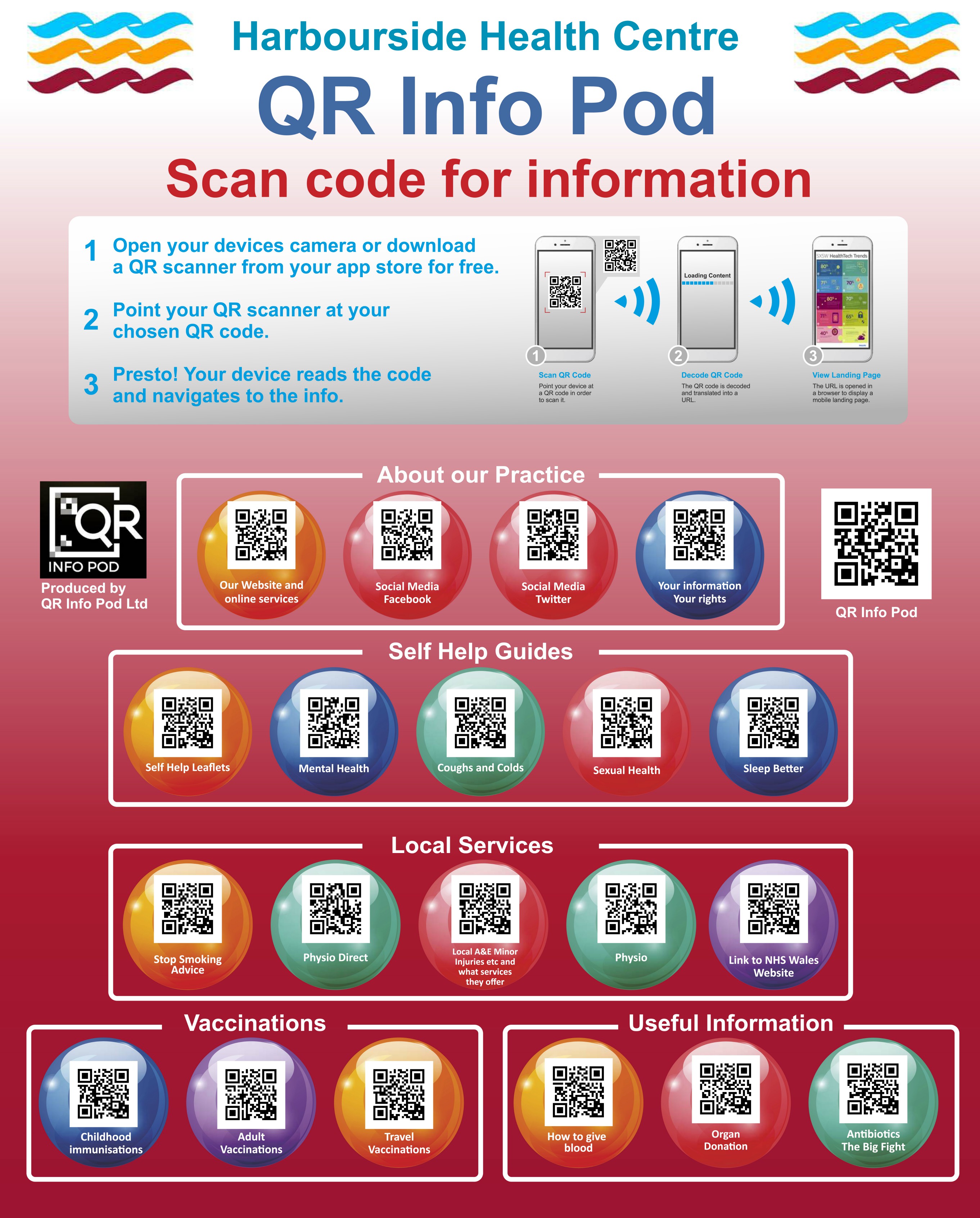How digital info boards are saving our practice £8k a year

The problem
Our practice has around 13,000 patients, and we noticed we had very high printing costs, particularly for patient information items. A CQC inspection also identified that we had convoluted information boards with overlapping posters, meaning patients struggled to find the information they wanted and the reception area looked messy.
What we did
We decided to trial the use of ‘QR info pods’ in our surgery reception area.
These pods are collections of posters that include so-called QR (Quick Response) codes that link to digital information. QR codes are the distinctive square barcodes, usually in black and white patterns, that are commonly used on advertising materials or packaging to direct consumers to information on a company’s website (see image).
Patients scan our codes with a smartphone camera or other digital device, which then directs them to services such as the practice website, social media sites and registration pages for online appointments and repeat medication.
The pods have become a talking point with patients – Dr Pat Wong
The pods also have dedicated sections, with QR codes for self-referral to local services such as smoking cessation, self-help guides, educational videos on topics like antibiotic awareness, carer services and health promotional campaigns. Crucially there are codes linking patients to seasonal information sources, such as flu vaccination campaign videos and materials. We use dynamic coding technology, which allows information related to a QR code to be continuously updated. The information is available in other languages, which further saves on printing.

Results
We offer patients the choice to scan information, or have it printed on demand.
After 12 months we had almost halved printing costs, from around £7,000 the previous year to £3,750. Although we spent £3,000 setting up the coding system, we also estimate the pods have saved an hour of GP time and 2.5 hours of administrative time a week on printing patient leaflets, equivalent to £5,300 in costs over the year – overall around £8,500 in ongoing annual savings.
Other benefits include that patients now understand our appointment and triage system better, as they can download our triage protocol to their phones. It also saves the NHS money, as we now request digital copies of all leaflets, posters and booklets. These are uploaded to the pods saving printing and distribution costs, as well as reprinting costs when the content changes.
The codes are tracked by analytics software so each time a user scans a code it is registered on our system. To date the codes average 63 hits each per month; – some attract more hits, such as our online services and self-help guides, while others such as ‘how to give blood’ get lower rates. The analytics software has also been useful in improving our understanding of what our patient population needs, helping us to provide the most comprehensive, relevant information.
The practice has seen an almost 300% upsurge in its Twitter following and online registrations since introducing the pods, allowing us to communicate more easily with patients through social media at no cost. We have received great feedback from patients, with one saying the pods were ‘so cool and accessible’.
We were also praised in a subsequent CQC practice inspection report for using the QR info pods to display up-to-date information, which was described as ‘innovative, ground-breaking and a great example of prudent healthcare in action’. The practice won the RCGP award for innovation in primary care in 2017.
What were the challenges?
Initially we had to invest time and money in an encrypted QR code-generating platform. This took around 18 months to design and complete, and cost around £3,000. Not everyone knows what a QR code is or how to use it, so we had to provide clear and intuitive instructions on how to scan the codes. The most elderly patients tend not to have the technology, but others have been intrigued and, once shown how to scan the codes, have become accustomed to using them. The pods have become a talking point with patients and have actually brought patients and receptionists together.
The future
We are continuing to develop our use of QR codes to expand the information to which we direct patients. We believe there is the potential for further time and cost savings, as well as benefits to patients. Other practices across the UK are trialling the approach and our practice has worked with health boards to develop a trademarked ‘community QR pod’, whereby practices set up the system using our technology. We believe QR info pods could benefit all types of practice. While they won’t replace traditional methods of communicating with patients altogether, we live in a digital age where most people use a smartphone.
QR codes are now growing in popularity and all Apple and Android operating systems now have inbuilt technology allowing phone cameras to detect QR and barcodes automatically, without downloading any software.
Dr Pat Wong is a GP partner and Steffan Gimblett is a practice manager in Swansea
Pulse October survey
Take our July 2025 survey to potentially win £1.000 worth of tokens












